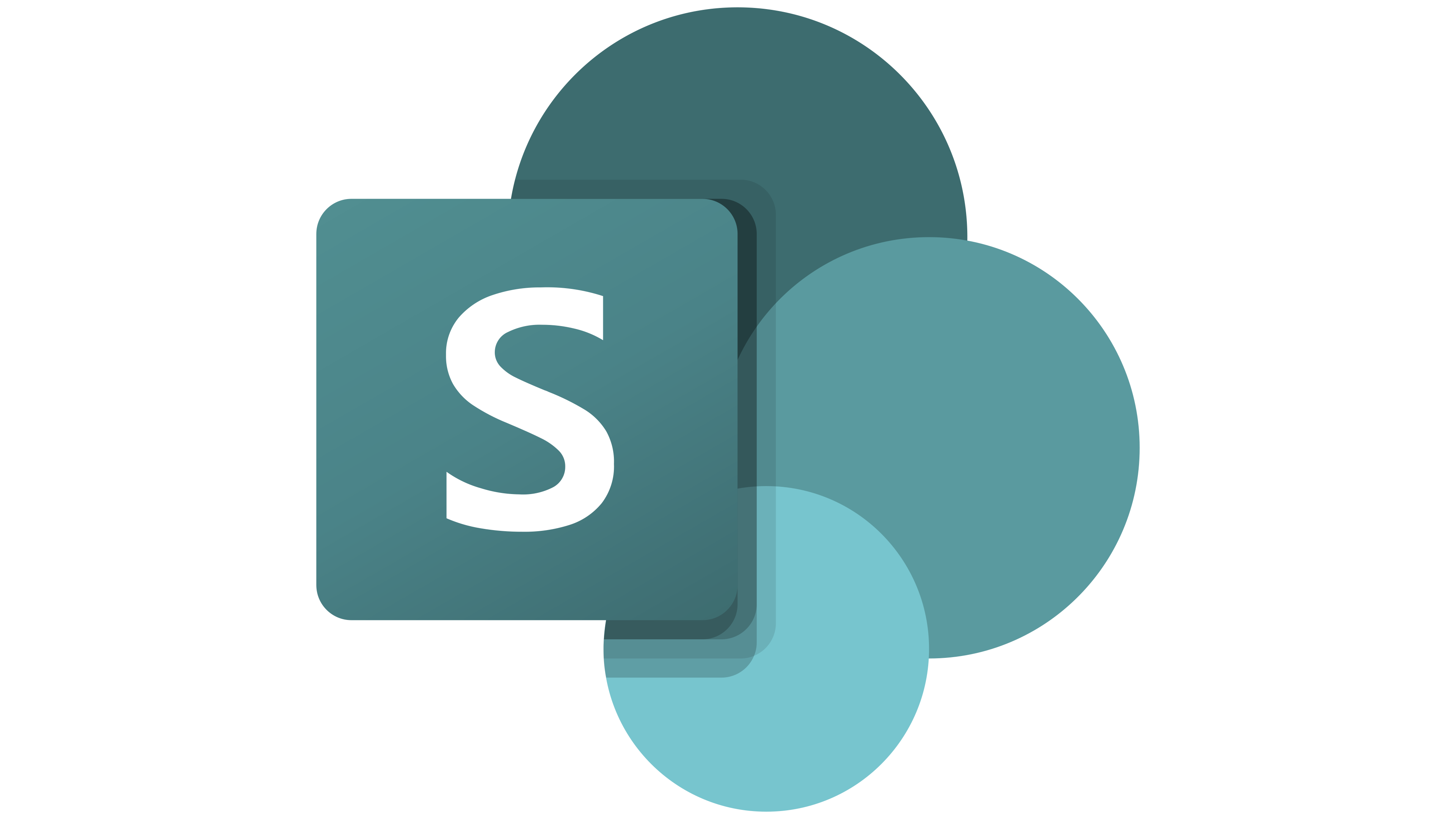SharePoint Logo
SharePoint, a web-based collaboration platform integrated with Microsoft Office, is at the forefront of content management and collaboration. Launched in 2001, it empowers teams to seamlessly collaborate by sharing documents, data, and resources, fostering a synchronized workspace. Its robust features include document management, automated workflows, and customizable spaces that cater to specific project needs, revolutionizing how teams interact and manage information. As a testament to its versatility, SharePoint is utilized by businesses of all sizes, proving itself as an invaluable asset in today’s digital landscape. With its user-friendly interface and diverse capabilities, SharePoint stands as a pillar of modern business operations, facilitating effortless collaboration and streamlined information management.
Meaning and history
From its inception, it was designed to enhance collaboration by offering a centralized space for storing and accessing shared documents and information. Over the years, SharePoint has undergone several transformations, evolving into a comprehensive tool that supports content management, team collaboration, and even serves as a platform for building customized applications.
In 2003, SharePoint Portal Server 2003 was released, introducing a range of new features, including user profiles and audience targeting, aimed at delivering a more personalized and targeted user experience. 2007 marked another milestone with the release of Microsoft Office SharePoint Server (MOSS). MOSS introduced numerous enhancements, such as workflow management and improved search capabilities, solidifying SharePoint’s position as a leading enterprise content management solution.
The 2010 and 2013 versions brought significant improvements in user experience and functionality, including the introduction of social networking features, and improved integration with Microsoft Office applications. SharePoint Online, part of the Office 365 suite, represents another significant leap forward, providing users with the flexibility of a cloud-based solution, ensuring that teams can collaborate and access information from anywhere in the world.
Today, SharePoint is used by organizations of all sizes across various industries, proving its adaptability and efficacy in facilitating collaboration, improving productivity, and managing content efficiently. Its constant evolution, fueled by Microsoft’s commitment to innovation, ensures that SharePoint remains at the forefront of the collaboration and content management landscape, setting the standard for what a modern business tool should be.
2003 – 2007
In 2003, SharePoint was integrated into the Office 2003 suite and incorporated into the Windows Server 2003 operating system, signifying a monumental stride in its evolution. Although it boasted enhanced personalization features and a refined interface, SharePoint had yet to fully crystallize into the comprehensive collaboration platform it aspired to be.
The visual identity of SharePoint underwent a remarkable transformation to align with the cohesive branding of Office 2003 programs. To the left of the logo, an assemblage of four asymmetrically sized quadrilaterals in vibrant hues of red, blue, yellow, and green, resonating with Microsoft’s signature color palette, created a captivating visual. Each of these quadrilaterals, imbued with a subtle gradient, was meticulously arranged in two horizontal tiers. Intriguingly, the quadrilaterals didn’t converge at the center, leaving a strategic void, rendering them reminiscent of petals of an abstract, deconstructed flower.
To the right of this graphic element, the logo featured the textual component, with the upper tier emblazoned with the sleek “Microsoft Office” wordmark, elegantly rendered in a slender, geometric sans-serif font. Below it, “SharePoint” was inscribed in a similar, albeit bolder, grotesque font. A meticulous alignment of these text elements to the left ensured a harmonious visual equilibrium. This fusion of innovative design and strategic branding encapsulated the essence of SharePoint, serving as a symbolic representation of its commitment to facilitating seamless collaboration and information management in the digital realm.
2007 – 2010
The 2007 iteration of SharePoint was a significant milestone, introducing a myriad of sophisticated features that not only optimized the platform’s efficiency but also brought about a fresh aesthetic. The erstwhile logo underwent a chic transformation, evolving into an emblem that was devoid of text but rich in symbolism.
The foundational structure of the logo was a square, albeit with its upper-left corner elegantly sheared off and softened with a rounded finish. Encasing the geometric shape was a delicate white border, accompanied by a purple outline that added a touch of vibrancy. The square itself was split into two distinct purple hues – a lighter and a darker shade, establishing a subtle contrast.
Commanding attention at the forefront was a sizable white arrow, slanting slightly towards the right, that dominated the backdrop. Ingeniously, the lower segment of the arrow was crafted to resemble a document or a page, complete with three horizontal lines symbolized by purple rectangles. This artistic representation eschewed the need for textual elements, with the platform’s name itself being absent from the logo. This contemporary iconography was a testament to the evolution of SharePoint as a platform that prides itself on facilitating seamless content management and collaboration in a modern digital workspace.
2010 – 2013
In 2010, Microsoft embarked on a mission to elevate SharePoint’s process automation capabilities while enriching its functionality, culminating in a comprehensive update of the platform. This metamorphosis was marked by a striking reimagined logo, distinguished by a vivid orange “S,” drawing parallels to the SharePoint Workspace application. This stylized letter resided within a square, retaining the signature rounded corner of its predecessor, thereby preserving the integrity of the base form while infusing new vitality into its essence.
The backdrop of the “S” was adorned with two abstract, slightly obscured rectangles, a creative homage to the documents that serve as the lifeblood of employee collaboration. In a harmonious blend of aesthetics, the logo predominantly flaunted shades of sand-orange, with the letter “S” and the frame basking in the richness of the darkest hues, gradually melding into lighter tones. This gradient not only added a sense of depth but also lent the elements a three-dimensional quality, resulting in a logo that encapsulates the robustness and dynamism of SharePoint as a pivotal tool in modern collaborative workspaces.
2013 – 2019
Following a meticulous redesign, the SharePoint logo emerged with a renewed simplicity, embracing a minimalistic palette of deep blue and crisp white. The left segment of the logo was graced by a vibrant blue trapezoid, tilted to resemble an ajar door or the open cover of a tome. This geometric form provided a canvas for the bold white “S” that adorned it, rendered in the familiar bold, uppercase grotesque font.
Contrastingly, the right half of the emblem introduced an intriguing motif – three white orbs interconnected by sinuous, curvilinear stripes. This assembly of geometric shapes coalesced into a semblance of a semicircle, framed on either side by slender lines of blue. This artful configuration was a symbolic representation of the synergistic interaction and seamless integration amongst the various components of the SharePoint system, epitomizing a harmonious, cyclic workflow that is central to effective team collaboration.
2019 – Today
Unceasing in its dynamic evolution, the SharePoint platform once again transformed its logo in 2019, unveiling a design that retained the familiar “S,” albeit rendered in the modern Segoe font. In this iteration, the “S” no longer resided within an inverted trapezoid but was encased within a sleek square with softly rounded corners. This geometric container is artfully superimposed upon three circles of varying dimensions, each partially intersecting the other.
A palette of turquoise hues, each with its own distinct intensity, is employed to fill these geometric shapes. The largest circle is imbued with the deepest shade of turquoise, gradually lightening to the smallest circle. This interplay of color is further nuanced by a multi-layered shadow cast by the square, adding a touch of depth and dimensionality to the logo, reflecting SharePoint’s ever-expanding capabilities and commitment to fostering seamless collaboration in an ever-evolving digital landscape.
















